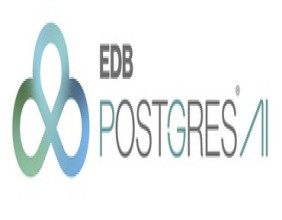The Global Sensor Fusion Market to grow from USD 7.12 billion in 2022 to USD 27.84 billion by 2030, at a CAGR of 18.56%.
PUNE, MAHARASHTRA, INDIA , December 6, 2023 /EINPresswire.com/ -- The "Sensor Fusion Market by Offering (Hardware, Software), Algorithms (Bayesian Filter, Central Limit Theorem, Convolutional Neural Networks), Technology, End-Use - Global Forecast 2023-2030" report has been added to 360iResearch.com's offering.The Global Sensor Fusion Market to grow from USD 7.12 billion in 2022 to USD 27.84 billion by 2030, at a CAGR of 18.56%.
Request a Free Sample Report @ https://www.360iresearch.com/library/intelligence/sensor-fusion?utm_source=einpresswire&utm_medium=referral&utm_campaign=sample
In the landscape of sensory technology, sensor fusion emerges as an advanced method that amalgamates data from diverse sensors, enhancing the accuracy and reliability of the resultant information. This integrative approach is pivotal across sectors such as robotics, vehicular technologies, the aeronautics industry, medical analysis, and the burgeoning IoT domain. Sensor fusion refines raw data through alignment, association, estimation, and integration stages, compensating for individual sensor deficits by leveraging algorithmic strength and data complementarity. The modern advancements in computational techniques, including machine learning and accurate filtering, are instrumental in elevating sensor fusion to a critical component of systems requiring nuanced environmental perception and decision-making. The sensor fusion market encapsulates the expansive field of synthesizing sensor data to enhance decision-making accuracy across numerous applications. The market is witnessing sustained growth with a global reach and technological inclusivity from hardware to software platforms, owing to technological advancements, increased demand for IoT and smart devices, stringent safety protocols, and escalating consumer expectations for integrated device functionality. The market faces hurdles in data privacy, complex system integration, and energy consumption. However, growth opportunities are ample, particularly in autonomous vehicles, IoT, and edge computing. Businesses aiming to capture these opportunities focus on innovations in energy efficiency, artificial intelligence, sensor diversity, and data security to propel market growth.
Technology: Advances in the miniaturization of MEMS sensor devices and microcontrollers enable massive adoption of wearable sensor systems.
Micro-electromechanical systems (MEMS) are important for their integration of sensing, actuation, and electronics into a minute silicon chip. Leveraging microfabrication, MEMS sensors are important in areas requiring compactness and energy efficiency, such as in wearable devices, automotive systems, and consumer electronics. Non-MEMS sensors, characterized by their robustness against extreme environmental challenges, cater to aerospace, heavy industries, and energy sectors. Between miniaturization and resilience, MEMS and Non-MEMS sensors represent parallel tracks of innovation, each indispensable within their respective application domains. As they evolve, continuous enhancements by various manufacturers ensure that both MEMS and non-MEMS sensor technologies remain at the forefront, effectively responding to the complex demands of modern industries.
End-Use: Consumer electronics, smartphones, and tablets vastly capitalize on sensor fusion for accurate device orientation, navigation, and motion sensing
Sensor fusion is an essential multi-sensory integration technology that enhances precision, reliability, and comprehensive analysis across various industries. In the automotive sector, it is a critical component for the development of advanced driver-assistance systems (ADAS) and self-driving vehicles, combining data from cameras, LiDAR, radar, and ultrasonic sensors to improve safety and performance. The consumer electronics industry heavily relies on sensor fusion to improve device functionality and user experience through motion tracking and gesture controls, features powered by accelerometers, gyroscopes, and other sensors. In defense and military applications, sensor fusion elevates situational awareness and efficiency by integrating inputs from thermal imaging, night vision, and radar, which are essential for tactical superiority. In healthcare, sensor integration provides holistic patient monitoring and diagnostic capabilities, utilizing data from a range of medical devices to support non-invasive and continuous health tracking, improving patient care.
Offering: Advancement in the hardware and integration of software to meet customized and application-specific client needs
Hardware embodies the core building blocks that involve various sensors, microcontrollers, processors, and connectivity components, sought after for durability, high efficiency, and refined attributes such as energy efficiency and compactness. The software stands as the cerebral counterpart, employing complex algorithms and APIs for data synthesis; modularity and upgradeability are critical considerations for clients. The sensor fusion landscape is shaped by the synergetic relationship between long-lasting and performant hardware and adaptable, cutting-edge software, with each sphere undergoing rapid development to cater to the nuanced demands of integrated and advanced sensory systems.
Algorithm: Preference of Kalman filter standard approach in diverse range GPS and inertial navigation systems applications
In contemporary sensor fusion applications, Bayesian filters are paramount for managing uncertainty and incomplete data. Leveraged heavily in dynamic, probabilistic models, spanning applications from robotics to autonomous vehicles. Meanwhile, the central limit theorem (CLT) underpins algorithm design by validating Gaussian distribution usage amidst non-normal sensor noise, a statistical backbone for averaging independent sensor readings. On the frontier of deep learning, convolutional neural networks (CNNs) are revolutionizing sensor fusion with the capability to process grid-structured data, which is essential in image and video analysis. The Kalman filter retains its stature for linear dynamic systems with Gaussian noise, ideal for applications such as GPS. The interplay of these algorithms, including traditional Bayesian and Kalman filters versus advanced CNNs, hinges on the data's complexity and nature and system requirements.
Regional Insights:
In the burgeoning field of sensor fusion technology, the Americas are experiencing remarkable growth, propelled by substantial investments from the U.S. and Canada in the automotive, consumer electronics, and healthcare sectors. Companies in the U.S. are investing heavily in advanced driver-assistance systems (ADAS) and autonomous vehicles, which rely on sensor fusion for accurate real-time data processing. In addition, Canada has robust growth attributed to its investments in IoT and innovative city projects backed by high demand for sensor fusion. In Europe, the Middle East, and Africa (EMEA), European countries display a high demand for sensor fusion applications in the automotive, aerospace, and healthcare sectors. Initiatives such as the European Green Deal drive the need for energy-efficient technologies in which sensor fusion plays a crucial role. The Middle East and Africa market is primarily cost-conscious; however, there is an escalating interest in adopting modern technologies for infrastructure enhancement. The Asia-Pacific region, led by China, Japan, and India, is undergoing rapid growth in the market due to escalating urbanization and manufacturing developments. This region's burgeoning tech industry and initiatives in developing the technology infrastructure are creating substantial demand for sensor fusion in domestic and industrial spheres.
FPNV Positioning Matrix:
The FPNV Positioning Matrix is essential for assessing the Sensor Fusion Market. It provides a comprehensive evaluation of vendors by examining key metrics within Business Strategy and Product Satisfaction, allowing users to make informed decisions based on their specific needs. This advanced analysis then organizes these vendors into four distinct quadrants, which represent varying levels of success: Forefront (F), Pathfinder (P), Niche (N), or Vital(V).
Market Share Analysis:
The Market Share Analysis offers an insightful look at the current state of vendors in the Sensor Fusion Market. By comparing vendor contributions to overall revenue, customer base, and other key metrics, we can give companies a greater understanding of their performance and what they are up against when competing for market share. The analysis also sheds light on just how competitive any given sector is about accumulation, fragmentation dominance, and amalgamation traits over the base year period studied.
Key Company Profiles:
The report delves into recent significant developments in the Sensor Fusion Market, highlighting leading vendors and their innovative profiles. These include Advantech Co., Ltd., Analog Devices, Inc., Baselabs GmbH, Beijing SenseTime Technology Development Co., Ltd., Ceva, Inc., EpiSys Science, Inc., Hensoldt AG, Hexagon AB, Honeywell International Inc., Infineon Technologies AG, Innoviz Technologies Ltd., Intel Corporation, Kitware, Inc., LeddarTech Inc., MEMSIC Semiconductor Co., Ltd., Microchip Technology Incorporated, MicroVision, Inc., Nvidia Corporation, NXP Semiconductors N.V., Omron Corporation, Physical Sciences Inc., Qualcomm Technologies, Inc., Renesas Electronics Corporation, Robert Bosch GmbH, ROHM Co., Ltd., Samsung Electronics Co., Ltd., Sony Group Corporation, STMicroelectronics N.V., TDK Corporation, TE Connectivity Ltd., Texas Instruments Incorporated, Thales Group, Trimble Inc., Verizon Communications Inc., and ZF Friedrichshafen AG.
Inquire Before Buying @ https://www.360iresearch.com/library/intelligence/sensor-fusion?utm_source=einpresswire&utm_medium=referral&utm_campaign=inquire
Market Segmentation & Coverage:
This research report categorizes the Sensor Fusion Market in order to forecast the revenues and analyze trends in each of following sub-markets:
Based on Offering, market is studied across Hardware and Software. The Hardware is further studied across Image Sensors, Inertial Measurement Unit, Radar Sensors, and Temperature Sensor. The Hardware commanded largest market share of 64.66% in 2022, followed by Software.
Based on Algorithms, market is studied across Bayesian Filter, Central Limit Theorem, Convolutional Neural Networks, and Kalman Filter. The Kalman Filter commanded largest market share of 44.23% in 2022, followed by Bayesian Filter.
Based on Technology, market is studied across Micro-Electromechanical System and Non-Micro-Electromechanical System. The Micro-Electromechanical System commanded largest market share of 55.77% in 2022, followed by Non-Micro-Electromechanical System.
Based on End-Use, market is studied across Automotive, Consumer Electronics, Defence & Military, Healthcare, Home Automation, and Industrial & Manufacturing. The Consumer Electronics commanded largest market share of 23.12% in 2022, followed by Automotive.
Based on Region, market is studied across Americas, Asia-Pacific, and Europe, Middle East & Africa. The Americas is further studied across Argentina, Brazil, Canada, Mexico, and United States. The United States is further studied across California, Florida, Illinois, New York, Ohio, Pennsylvania, and Texas. The Asia-Pacific is further studied across Australia, China, India, Indonesia, Japan, Malaysia, Philippines, Singapore, South Korea, Taiwan, Thailand, and Vietnam. The Europe, Middle East & Africa is further studied across Denmark, Egypt, Finland, France, Germany, Israel, Italy, Netherlands, Nigeria, Norway, Poland, Qatar, Russia, Saudi Arabia, South Africa, Spain, Sweden, Switzerland, Turkey, United Arab Emirates, and United Kingdom. The Europe, Middle East & Africa commanded largest market share of 38.45% in 2022, followed by Americas.
Key Topics Covered:
1. Preface
2. Research Methodology
3. Executive Summary
4. Market Overview
5. Market Insights
6. Sensor Fusion Market, by Offering
7. Sensor Fusion Market, by Algorithms
8. Sensor Fusion Market, by Technology
9. Sensor Fusion Market, by End-Use
10. Americas Sensor Fusion Market
11. Asia-Pacific Sensor Fusion Market
12. Europe, Middle East & Africa Sensor Fusion Market
13. Competitive Landscape
14. Competitive Portfolio
15. Appendix
The report provides insights on the following pointers:
1. Market Penetration: Provides comprehensive information on the market offered by the key players
2. Market Development: Provides in-depth information about lucrative emerging markets and analyzes penetration across mature segments of the markets
3. Market Diversification: Provides detailed information about new product launches, untapped geographies, recent developments, and investments
4. Competitive Assessment & Intelligence: Provides an exhaustive assessment of market shares, strategies, products, certification, regulatory approvals, patent landscape, and manufacturing capabilities of the leading players
5. Product Development & Innovation: Provides intelligent insights on future technologies, R&D activities, and breakthrough product developments
The report answers questions such as:
1. What is the market size and forecast of the Sensor Fusion Market?
2. Which are the products/segments/applications/areas to invest in over the forecast period in the Sensor Fusion Market?
3. What is the competitive strategic window for opportunities in the Sensor Fusion Market?
4. What are the technology trends and regulatory frameworks in the Sensor Fusion Market?
5. What is the market share of the leading vendors in the Sensor Fusion Market?
6. What modes and strategic moves are considered suitable for entering the Sensor Fusion Market?
Read More @ https://www.360iresearch.com/library/intelligence/sensor-fusion?utm_source=einpresswire&utm_medium=referral&utm_campaign=analyst
Mr. Ketan Rohom
360iResearch
+1 530-264-8485
[email protected]




